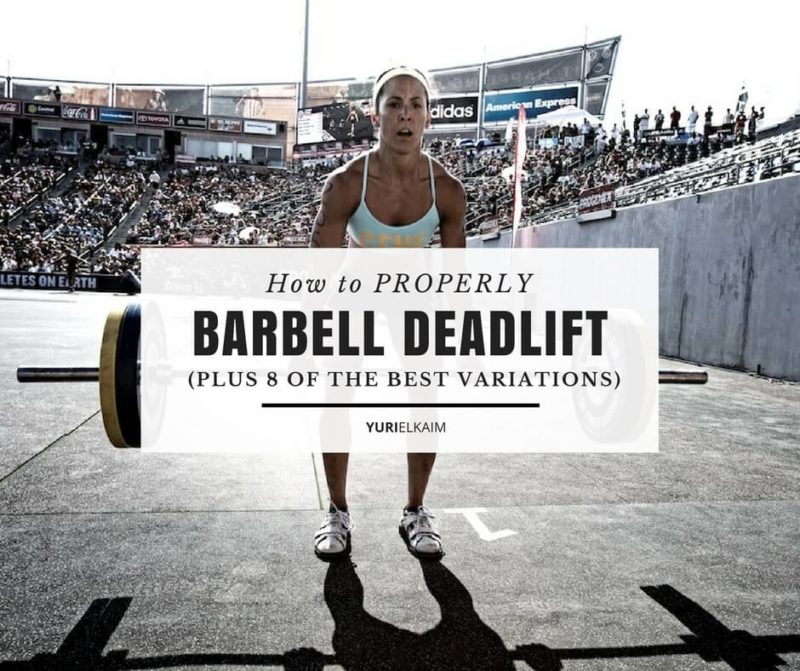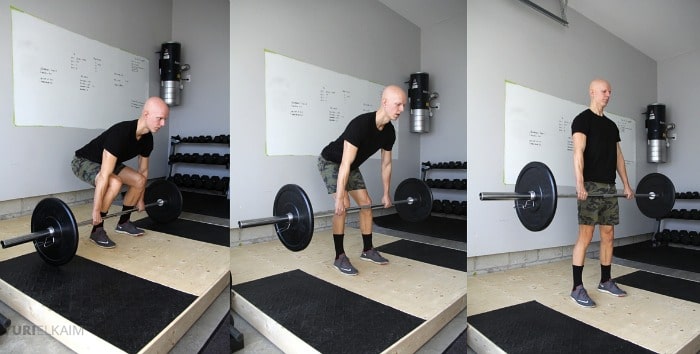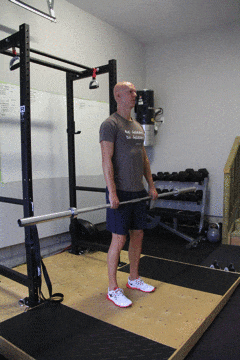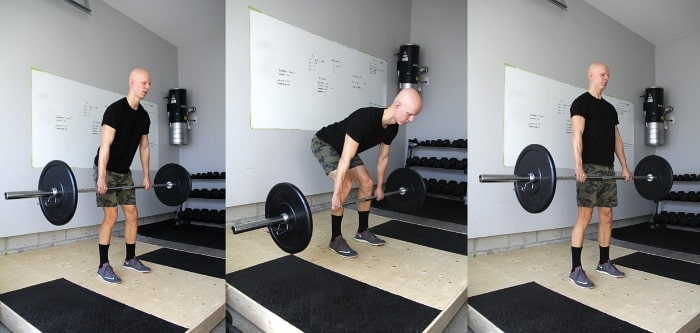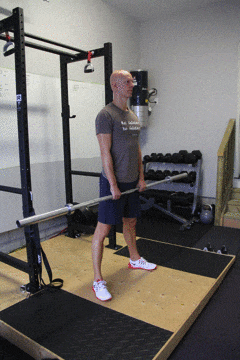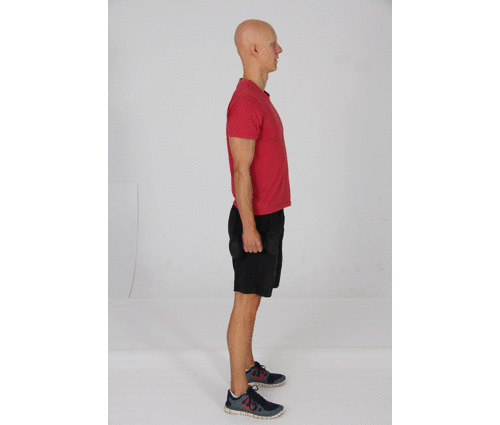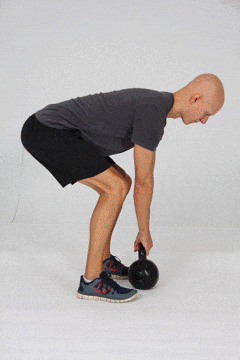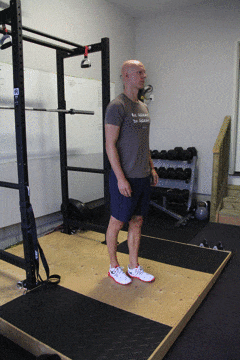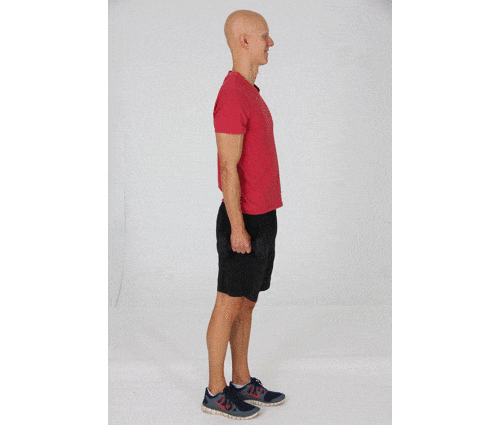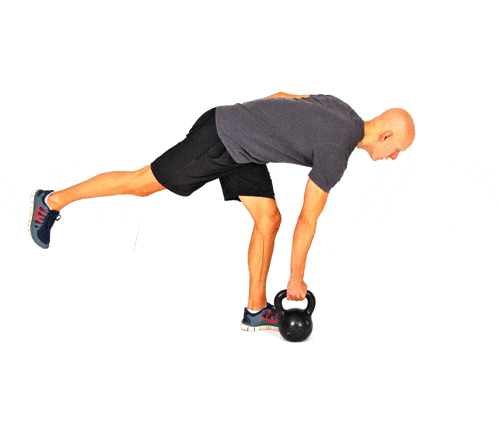In this article
Deadlifts are one of the most praised exercises in existence. They’re also one one of the most misunderstood.
While many people call them one of the best exercises you can do, just as many others say they’re too dangerous or complicated.
The truth is, deadlifts aren’t dangerous at all (and no, they aren’t complicated either).
What’s dangerous is doing them incorrectly, along with attempting them before your body is ready.
Below we’ll look into why deadlifts are one exercise everyone should be doing, and, more importantly, how to do them correctly.
But before that, here are a few other awesome exercises you’ll want to master:
- Glute Bridge Exercise: 7 Simple Variations to See and Feel Better Results
- Barbell Hip Thrust: How to Do It (The Right Way)
- How to Do Russian Kettlebell Swings (The Right Way)
Why You Should Deadlift
Before we get into form and technique, let’s first dive into why you need to deadlift, and what it is about this exercise that makes it so effective.
1. It Develops the Posterior Chain
In the fitness world, we tend to focus a lot on the front side of our bodies (what we see facing the mirror). If we give attention to the backside at all, it’s typically only our glutes (because who wants a saggy butt), while we neglect other areas.
But these “other areas” are extremely important when it comes to developing overall strength and increasing performance.
These areas are referred to as the posterior chain, and they make up the lower backside of our bodies: the glutes, hamstrings, calves, and low back.
Strengthening this group of muscles not only helps us perform day-to-day activities that require bending and lifting, but also gives us a boost in power. This backside power translates into faster sprints, higher jumps, and heavier lifts – all amazing benefits, especially if you’re a competitive athlete.
And even if you’re not a competitive athlete, that power can help in everyday life, whether you have to scoop up your kids or dart out of the way of a runaway cart in the grocery store parking lot.
Deadlifts are fantastic at developing the posterior chain, since (when done correctly) you’re targeting these areas directly.
2. It Can Increase Fat Loss
If you were to put together an arsenal of specific exercises that help you blast fat, deadlifts should definitely be in it.
This is because deadlifts are what we call a compound exercise. These work several major muscle groups at once, which increases something called excess post-exercise oxygen consumption (EPOC) or “afterburn.”
Basically, that afterburn is the amount of energy we use (or calories we burn) after a workout, rather than during.
This afterburn occurs because your body has to work harder to restore your oxygen levels and clear out excess lactic acid (not to mention repair your muscles) following a workout. All of these activities require energy, aka calories.
The kicker is, the only way to significantly increase your afterburn is by doing intense exercise.
But not just any exercise. Intense resistance exercise using compound exercises like the deadlift, combined in an interval-style workout, has been shown to be one of the best ways to increase this afterburn.
For example, a study published in the European Journal of Applied Physiology found that a resistance training circuit workout elevated the participants’ metabolisms for an astounding 48 hours following the workout (1).
I don’t know about you, but I’m all for burning more calories — even when I’m not working out!
3. It’s a Top Exercise for Sculpting Legs and Glutes
Obviously, deadlifts are one of my all-time favorites for sculpting toned, super-strong legs.
Alongside heavy squats, deadlifts are one of the best exercises to develop the glutes, hamstrings, quadriceps, calves, and lower back muscles.
This is because heavy deadlifts (like other heavy resistance exercises) increase human growth hormone (HGH) – a potent hormone responsible for building lean muscle and burning fat.
Barbell Deadlift Form
Proper deadlift technique is essential to master before you even attempt a deadlift with weight.
The problem I see most often when people deadlift is rounding the spine. It’s easy to do this, especially when you’re a beginner and haven’t developed your posterior chain and core muscles enough to hold your spine straight.
The result is a rounding and falling forward of the shoulders as the barbell (or whatever weight you’re using) pulls you forward.
This technique mistake is what sometimes gives deadlifts a bad rep for being dangerous. Indeed, when your spine isn’t adequately supported by well-developed surrounding muscles, the risk for injury definitely increases.
However, just because some people have been injured doing deadlifts by lifting too heavy too early, doesn’t mean you should avoid them altogether. The benefits are too great.
Instead, your first step needs to be strengthening your core, back and leg muscles using a variety of exercises (for a detailed breakdown of the 19 best glute exercises, check out this post) to prep your body for deadlifts.
These can include planks, compound lifts with weights like squat-presses, bridges, and weighted hip thrusts.
Once you’ve built up your strength, you can practice proper deadlift form using just your bodyweight, then gradually add weight until you can comfortably handle a heavy barbell.
So, on to proper deadlift form! For standard deadlifts, always begin with your weight resting on the floor.
- Begin standing (if you’re using a barbell) with your feet hip-width apart and just under the bar, which should be close to your shins.
- Bend and grab the bar using an overhead grip, your arms just outside of your legs.
- Bend your knees slightly until your shins are lightly brushing the bar.
- Now, keeping your chest lifted and spine straight, engage your glutes and lift the bar, keeping it close to your legs.
- Avoid leaning back once you’re upright.
- Return the weight to the floor by engaging your glutes once more, pushing your hips back.
- Congrats! You’ve completed one rep.
Deadlift Variations
The other great thing about deadlifts is they are extremely versatile. With all of these variations, it would be almost impossible not to hit every muscle in your legs.
Get ready for some sculpted stems!
Before you attempt the variations below, again make sure that your standard deadlift form is correct and apply it to each version. If you’ve built up your strength and can deadlift with weight using proper form, try out a weight you can lift for a maximum of 6 to 8 reps.
1. Barbell Stiff Leg Deadlift
The stiff leg deadlift puts even more emphasis on your glutes and hamstrings, since you’re taking a lot of bend out the knees. Keep in mind that your knees shouldn’t be locked, but only just slightly bent as you pull up with your glutes.
- Begin standing with your feet hip-width apart and just under the bar, which should be close to your shins.
- Hinge at your hips and grasp the bar, with your arms just outside of your legs.
- Breathe in, bending your knees just slightly, keeping your chest lifted and spine straight.
- Engage your glutes to lift the bar, keeping it close to your legs.
- Avoid leaning back once you’re upright.
- Return the weight to the floor by engaging your glutes once more, pushing your hips back.
- Repeat for 6 to 8 reps.
2. Barbell Romanian Deadlift
The Romanian deadlift begins upright already holding your barbell, instead of on the floor.
- Begin standing with your feet hip-width apart and just under the bar, toes facing forward. The bar should be close to your shins.
- Bend and grab the bar, your arms just outside of your legs, shoulders back.
- Bend your knees slightly until your shins are brushing the bar.
- Now, keeping your chest lifted, and spine straight, engage your glutes and lift the bar, keeping it close to your legs throughout the lift.
- Avoid leaning back once you’re upright.
- Repeat for 6 to 8 reps.
3. Barbell Sumo Deadlift
The sumo deadlift looks and feels very different from other variations. Here, your feet are set wide, your arms are inside your legs, and there is more bend in your knees.
- Begin standing in front of your barbell on the ground, close to your shins.
- Widen your stance to greater than shoulder width. Your feet should turn out slightly.
- Bend at your hips to grab the bar (your arms will be inside your legs), keeping your shoulders back.
- Bend your knees, keep your chest up, and push through your heels and glutes to pull the bar up.
- Return the barbell to the ground by pushing your hips back and keeping your spine straight.
- Repeat for 6 to 8 reps.
4. Dumbbell Deadlift
The dumbbell deadlift replaces your barbell with – you guessed it – dumbbells. This is great for those still working on building strength in the posterior chain with slightly lighter weights before jumping into heavy barbell deadlifts.
- Begin standing holding a pair of dumbbells, feet hip width apart, arms by your sides.
- Bend forward, bringing your dumbbells in front of you, palms facing you.
- Push your hips back, keep your chest forward, spine straight, and lower your dumbbells to the ground. Keep them close to your legs throughout the movement.
- Return to standing by pushing through your glutes and hamstrings.
- Repeat for 10 to 12 reps.
5. Kettlebell Deadlift
Kettlebells are also great to work with when your developing your deadlift strength, since they’re easy to handle and can help develop your grip strength.
- Begin standing in front of your kettlebell, feet shoulder-width apart, toes facing forward.
- Hinge forward at your hips, bending your knees slightly, and grab your kettlebell with both hands in an overhead grip.
- Push through your legs and glutes to lift to standing, keeping your chest up and spine straight throughout the movement.
- Lower in the same way, pushing your hips back and engaging the glutes as you return the kettlebell to the ground.
- Repeat for 10 to 12 reps.
6. Bodyweight Single-Leg Romanian Deadlift
Ready for an intense balance challenge alongside your deadlift? Here it is!
We’ll start with just bodyweight for this variation to get you used to the movement, and to develop your stabilizer muscles.
- Begin standing. Planting one foot firmly into the ground, extend your other out behind you.
- Bend your planted knee slightly and hinge forward at your hips, keeping your extended leg elevated and your spine straight. Keep your chest up, shoulders back.
- You can keep your hands in front of you as if your holding a bar, or kettlebell.
- Return to standing by driving up through your planted leg and glute.
- Repeat for 10 to 15 reps.
Note: If you find you’re really struggling with balance here, try to focus on further engaging your glutes and core.
7. Single-Leg Dumbbell Romanian Deadlift
- Begin standing, two dumbbells on the ground in front of you.
- Planting one foot firmly into the ground, extend your other out behind you.
- Bend your planted knee slightly, hinge forward at your hips, and grasp the dumbbells.
- Keep your extended leg elevated, your spine straight, chest up, shoulders back.
- Lift to standing (holding your dumbbells close to your leg) by driving up through your planted leg and glute.
- Repeat for 10 to 12 reps, then switch legs.
8. Single-Leg Kettlebell Romanian Deadlift
- Begin standing, your kettlebell on the ground in front of you.
- Planting one foot firmly into the ground, extend your other behind you.
- Bend your planted knee slightly, hinge forward at your hips, and grasp the kettlebell using n overhead grip.
- Keep your extended leg elevated, your spine straight, chest up, shoulders back.
- Lift to standing (holding your dumbbells close to your leg) by driving up through your planted leg and glute.
- Repeat for 10 to 12 reps, then switch legs.
Burn Fat, Get Stronger, and Boost Performance
Adding deadlifts to your routine is a powerful way to build you posterior chain, increase performance, and burn fat.
Remember to always be sure you have perfect deadlift form down before moving on to heavy deadlifts, however. Once you’ve got it perfected, move on to more challenging variations.
I promise you (and your body) will love you for it.
Get Lean with Interval Training
Blast fat with this NEW strength and interval cardio combo workout.
The FREE Fat Blaster workout includes an instructional video, workout tracker, and follow-along audio. It’s a $29 value – but it’s yours FREE!
Click the banner below to download it now!

